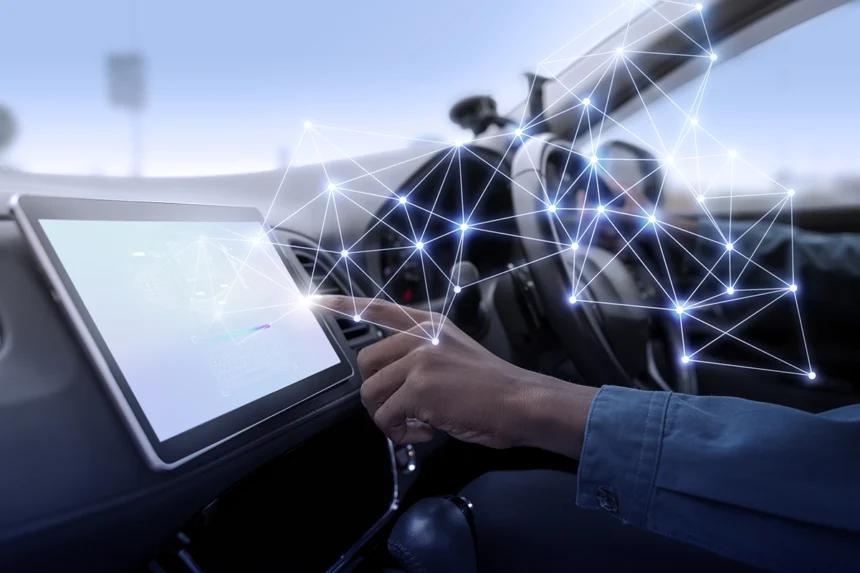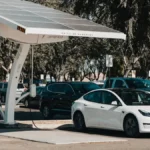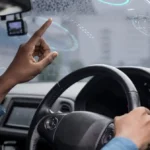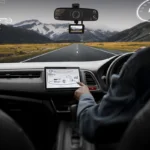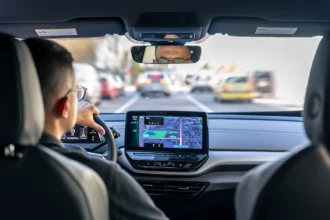Are you curious about the future of car technology? Wondering what innovations will shape the automotive industry over the next five years If so, you’ve come to the right place. This article will dive into the most exciting car technology trends that are set to revolutionize the way we drive, commute, and interact with our vehicles.
Introduction
The automotive industry is undergoing a transformation unlike any we’ve seen before. With advancements in self-driving cars, electric vehicles, and AI in cars, the next five years promise to bring about significant changes. But what exactly can we expect? Let’s explore the car technology trends that will dominate the next half-decade.
1. Self-Driving Cars: The Road to Autonomy
Levels of Autonomy
Self-driving cars, also known as autonomous vehicles, are no longer a distant dream. They are becoming a reality, and their development is categorized into different levels of autonomy:
- Level 0: No automation. The driver controls everything.
- Level 1: Driver assistance. Features like adaptive cruise control.
- Level 2: Partial automation. The car can control steering and acceleration but requires driver supervision.
- Level 3: Conditional automation. The car handles most tasks but may need human intervention.
- Level 4: High automation. The car can operate without human input in most situations.
- Level 5: Full automation. No human input is needed at any time.
Current Developments
Companies like Tesla, Waymo, and Uber are at the forefront of developing self-driving technology. Tesla’s Autopilot and Full Self-Driving (FSD) systems, Waymo’s autonomous ride-hailing services, and Uber’s self-driving freight trucks are just a few examples of how this technology is advancing.
Challenges and Opportunities
While the progress is impressive, self-driving cars still face significant challenges:
- Regulatory Hurdles: Governments need to establish frameworks for the safe operation of autonomous vehicles.
- Safety Concerns: Ensuring the safety of passengers and pedestrians is paramount.
- Public Trust: Building trust in the technology is crucial for widespread adoption.
2. Electric Vehicles: Driving Toward a Sustainable Future
The Rise of EVs
Electric vehicles (EVs) are gaining popularity as consumers become more environmentally conscious. The automotive industry is investing heavily in EV technology to meet the growing demand.
Benefits of EVs
- Environmental Impact: EVs produce zero emissions, reducing the carbon footprint.
- Cost Savings: Lower fuel and maintenance costs make EVs more economical in the long run.
- Performance: EVs offer instant torque and smooth acceleration, providing a better driving experience.
Key Players and Innovations
- Tesla: Leading the charge with its range of electric cars and the development of Supercharger networks.
- Nissan: Known for the Nissan Leaf, one of the best-selling electric cars.
- GM: Pushing forward with its Ultium battery technology and a diverse lineup of EVs.
Future Trends
- Battery Technology: Advances in battery technology will lead to longer ranges and faster charging times.
- Infrastructure Development: Expansion of charging networks will make it easier for EV owners to charge their vehicles.
- Affordability: As technology improves, the cost of EVs is expected to decrease, making them more accessible to a broader audience.
3. AI in Cars: The Intelligent Co-Pilot
AI Integration
Artificial Intelligence (AI) is revolutionizing the automotive industry by enhancing the driving experience and improving safety. AI systems can process vast amounts of data in real-time, making split-second decisions that can prevent accidents and optimize performance.
Key Applications
- Driver Assistance: AI-powered systems like adaptive cruise control, lane-keeping assist, and automatic emergency braking are becoming standard features.
- Predictive Maintenance: AI can predict when a car needs maintenance, reducing the risk of breakdowns and extending the vehicle’s lifespan.
- Infotainment Systems: Voice-activated assistants and personalized infotainment options are making driving more enjoyable.
The Future of AI in Cars
- Enhanced Safety: AI will continue to improve vehicle safety by detecting potential hazards and taking preventive actions.
- Personalization: Cars will adapt to individual drivers, offering a personalized driving experience based on preferences and habits.
- Connected Ecosystem: AI will enable seamless integration with other smart devices, creating a connected ecosystem that enhances convenience and functionality.
4. Connected Cars: The Internet of Vehicles
Connectivity Features
Connected cars are equipped with internet access and a variety of sensors that allow them to communicate with other vehicles, infrastructure, and external networks. This connectivity enhances safety, efficiency, and convenience.
Vehicle-to-Everything (V2X) Communication
V2X technology enables cars to communicate with each other (V2V), infrastructure (V2I), pedestrians (V2P), and the cloud (V2C). This communication can:
- Prevent Accidents: By sharing information about road conditions and potential hazards.
- Reduce Traffic Congestion: By optimizing traffic flow and reducing bottlenecks.
- Enhance Navigation: By providing real-time updates on traffic and road conditions.
Innovations and Future Trends
- 5G Connectivity: The rollout of 5G networks will enable faster and more reliable communication between vehicles and infrastructure.
- Over-the-Air (OTA) Updates: Cars will receive software updates remotely, ensuring they always have the latest features and improvements.
- Smart Cities: Integration with smart city infrastructure will further enhance the capabilities of connected cars.
5. Advanced Driver Assistance Systems (ADAS)
What is ADAS?
ADAS encompasses a range of technologies that assist the driver in the driving process. These systems use sensors, cameras, and radar to monitor the vehicle’s surroundings and provide real-time feedback to the driver.
Key ADAS Features
- Adaptive Cruise Control (ACC): Maintains a safe distance from the vehicle ahead.
- Lane Departure Warning (LDW): Alerts the driver if the vehicle is drifting out of its lane.
- Blind Spot Detection (BSD): Warns the driver of vehicles in their blind spots.
- Automatic Emergency Braking (AEB): Applies brakes automatically to prevent collisions.
The Future of ADAS
- Improved Sensors: Advances in sensor technology will enhance the accuracy and reliability of ADAS.
- Integration with AI: AI will further improve the capabilities of ADAS by enabling more sophisticated decision-making.
- Wider Adoption: As costs decrease, ADAS will become standard in more vehicles, increasing overall road safety.
6. Shared Mobility: Redefining Car Ownership
The Shift to Shared Mobility
The concept of car ownership is evolving. With the rise of ride-sharing and car-sharing services, more people are opting for shared mobility solutions.
Benefits of Shared Mobility
- Cost Savings: Shared mobility reduces the costs associated with car ownership, such as maintenance, insurance, and parking.
- Environmental Impact: Fewer cars on the road lead to reduced traffic congestion and lower emissions.
- Convenience: Ride-sharing and car-sharing services offer flexibility and convenience, allowing users to choose the right vehicle for their needs.
Future Trends
- Autonomous Ride-Sharing: Self-driving cars will further revolutionize shared mobility by providing safe and efficient transportation without the need for a human driver.
- Integration with Public Transport: Shared mobility services will integrate with public transportation systems, creating a seamless and efficient travel experience.
- Sustainability: Electric and hybrid vehicles will dominate shared mobility fleets, further reducing the environmental impact.
7. In-Vehicle Health Monitoring
Health and Wellness Features
Car manufacturers are increasingly focusing on the health and wellness of drivers and passengers. In-vehicle health monitoring systems can track vital signs and provide real-time feedback.
Key Features
- Heart Rate Monitoring: Sensors in the seats and steering wheel can monitor the driver’s heart rate.
- Stress Detection: AI systems can detect signs of stress and suggest calming measures.
- Fatigue Detection: Cameras can monitor the driver’s eyes and alert them if they show signs of fatigue.
The Future of Health Monitoring
- Enhanced Sensors: More advanced sensors will provide accurate and comprehensive health data.
- Integration with Health Apps: Health data from the car will integrate with other health apps and devices, providing a holistic view of the driver’s health.
- Personalized Wellness Programs: Cars will offer personalized wellness programs based on the driver’s health data, promoting a healthier lifestyle.
FAQs
What are the key car technology trends to watch in the next five years?
The key trends include self-driving cars, electric vehicles, AI in cars, connected cars, advanced driver assistance systems (ADAS), shared mobility, and in-vehicle health monitoring.
How will self-driving cars impact the automotive industry?
Self-driving cars will revolutionize the automotive industry by improving safety, reducing traffic congestion, and changing the way people travel. They will also create new business opportunities and require significant changes in regulations and infrastructure.
What are the benefits of electric vehicles?
Electric vehicles offer environmental benefits, cost savings, and improved performance. They produce zero emissions, have lower fuel and maintenance costs, and provide a smooth and responsive driving experience.
How is AI being used in cars?
AI is used in various applications, including driver assistance, predictive maintenance, and infotainment systems. It enhances safety, personalizes the driving experience, and integrates with other smart devices.
What is V2X communication?
Vehicle-to-Everything (V2X) communication enables cars to communicate with other vehicles, infrastructure, pedestrians, and the cloud. This technology improves safety, reduces traffic congestion, and enhances navigation.
What is ADAS?
Advanced Driver Assistance Systems (ADAS) use sensors, cameras, and radar to assist the driver in the driving process. Key features include adaptive cruise control, lane
READ MORE : Telematics Transforms Fleet Management for Efficiency
Conclusion
The next five years will bring transformative changes to the automotive industry. From the rise of self-driving cars and electric vehicles to the integration of AI and 5G technology, our driving experience is set to become safer, more efficient, and more enjoyable.
Thank you for joining us on this journey into the future of car technology. Stay tuned for more updates and insights by following us on social media, subscribing to our push notifications, and signing up for our newsletter. Let’s drive into the future together


